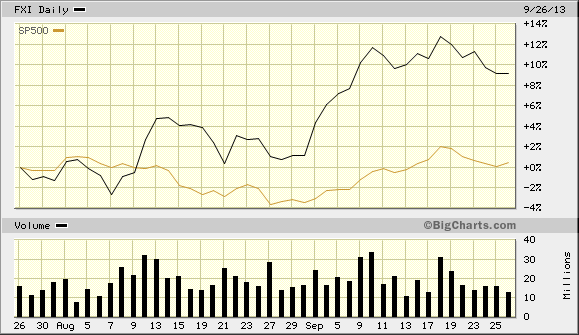By The Sizemore Letter
Earlier this year, I asked if e-cigarettes would relight Big Tobacco’s prospects. My answer was an unequivocal “no.”
Rather than being a durable growth business for Altria (MO), Reynolds American (RAI) or Lorillard (LO), e-cigarettes seem to be yet another way to help people stop smoking—a trendier version of a nicotine patch or Nicorette gum, if you will. And because, as non-tobacco products, e-cigs were almost completely unregulated, they eroded another long-term competitive advantage for the existing players in the industry: high barriers to entry.
Outside of weapons, tobacco is probably the most regulated industry on the planet. An onerous regulatory regime favors large existing players with the size and political influence to navigate the red tape and has the effect of snuffing out smaller players and would-be upstarts. This is one of the reasons that, despite decades of punitive taxes and lawsuits and an ever-shrinking customer base, Big Tobacco is still wildly profitable. (In the special case of tobacco, the ban on advertising also give established brands with name recognition an insurmountable advantage over would-be upstarts.)
But in the wild-wild-west world of unregulated e-cigs, there are over 250 brands currently on the market and little or no restrictions on their sale or advertising. And in a shocking marketing failure for companies that are normally run like well-oiled machines, Big Tobacco largely botched the e-cig branding game. As I wrote in June, Altria, the maker of the iconic Marlboro brand (among others) launched its new e-cig under the brand name Mark Ten. Take a look at the brand’s website. There is no mention of Altria, Philip Morris, or Marlboro.
The unregulated free-for-all may be quickly coming to an end. The attorneys general for 37 states, Puerto Rico, Guam and the U.S. Virgin Islands have petitioned the U.S. Food and Drug Administration to regulate e-cigs as if they were tobacco products. Among their concerns are the attractiveness of e-cigs—some of which are fruit flavored like a hookah water pipe—to children and teenagers. According to the Center for Disease Control, 1 in 10 high school students tried an e-cig in 2012.
And it’s not just American authorities. On October 8, the European Parliament is expected to vote on a new tobacco directive that would treat e-cigs as a medicine and subject them to strict regulation.
We should have seen this coming. Call it an adaptation of Maslow’s Hammer: If all you have is a hammer, everything looks like a nail. After four decades of aggressively attacking tobacco smoking as a social ill, it its natural that regulators will clamp down on something that “looks like tobacco,” even if it is smokeless and likely no more harmful than my (admittedly excessive) coffee habit.
What does this mean for the industry?
Ironically, it’s modestly good news for Big Tobacco. Regulation should slow down the trend of smokers ditching their cigarettes for e-cigs. And within the e-cig universe, Big Tobacco will have a massive advantage over smaller upstarts. Altria knows a thing or two about navigating rough regulatory seas. They can transfer that knowledge to their Mark Ten e-cig brand far more easily than a new upstart brand can learn it.
We need to keep a little perspective though. E-cigs still only make up about 1% of traditional cigarette sales, and cigarette sales continue to sink lower. To the extent that tobacco is investable, it is a no-growth dividend and share buyback story. Tobacco is not—and never will be again—a growth story.
Charles Lewis Sizemore, CFA, is the editor of the Sizemore Investment Letter and the chief investment officer of investments firm Sizemore Capital Management. As of this writing, he was long MO. Click here to learn about his top 5 global investing trends and get your copy of “The Top 5 Million Dollar Trends of 2013.” This article first appeared on InvestorPlace.
This article first appeared on Sizemore Insights as Is the E-Cigarette Revolution Getting Stubbed Out?

